
views
Dressing Yourself for Cold

Dress in layers. The best way to do this is work on collecting your layers year round. Whenever you find a warm winter coat someone else has thrown away, hold on to it. It will come in handy during the winter, and can be used as a pillow or to lay on other times of the year. Think about using a plastic bag over you if you don't have a waterproof layer -- if you get wet, you get cold.

Use insulation techniques. You can insulate yourself with multiple layers, but if you’re still cold, try newspaper. By crumpling it up and stuffing it between layers of clothing you can create insulating pockets of air that will help keep you warm. You could also try foam pieces or blankets between your clothing, both of which are much warmer than newspaper. Plastic bags also work well. If you have nothing else, dry leaves will even work. Don't use fiberglass insulation (often pink fibers between layers of paper, used in houses). The tiny glass fibers will cut your skin and could cause infection.
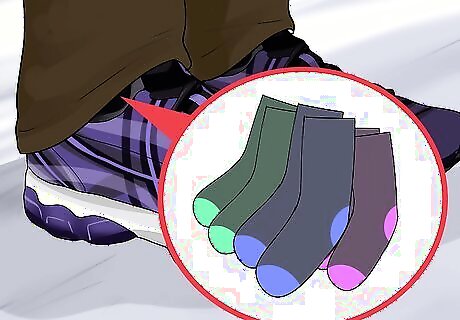
Don’t forget your feet. Wear multiple socks on cold nights. Before it gets cold, work on finding boots that cover your whole foot, ankle, and part of your leg. Keeping your feet and lower legs protected from cold wind is essential to staying warm. If you are really cold, you might need to create layers of insulation on your feet, perhaps even including plastic bags. Make sure you go to bed with dry socks on.
Collecting Supplies
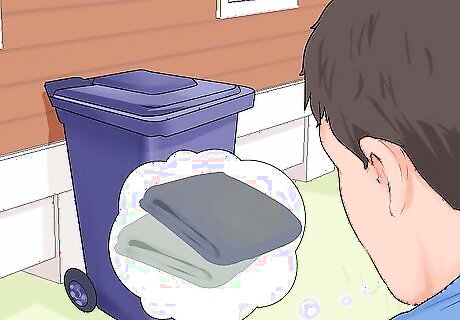
Stockpile blankets and sleeping bags. Keep an eye out for blankets and sleeping bags during summer and fall that might have been discarded in trash cans, before you really need them. These will be essential when you are sleeping outside, but can also keep you warm in a car or in a more protected shelter. Wrap yourself with blankets and then get into the sleeping bag for maximum warmth.
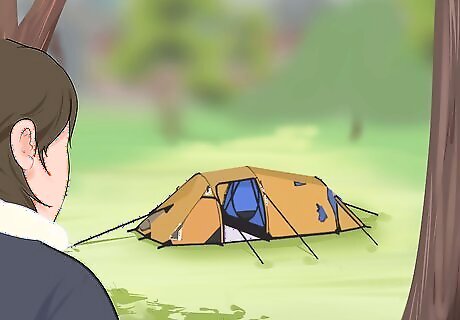
Look for a tent if you know you are staying outside. Sometimes people throw tents away with only minor holes or rips -- look at campsites or other places where people have put up tents. Some people don’t want to sleep indoors even when it’s freezing. To make sure you have some kind of shelter outside, think about trying to find a tent for yourself. If you can’t find one, stringing up blankets from trees can help create a makeshift shelter.
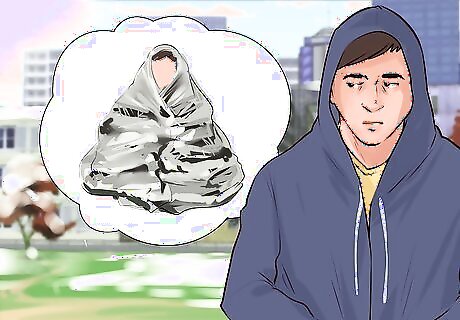
Find a metallic survival blanket. These are often handed out at the end of a marathon or other long run and then are quickly discarded. Collect a few of these (they are very light and easy to fold up) for winter nights. Cover the torso area at least of your sleeping bag with the survival blankets.

Collect plastic bags. You will need to keep your clothing and bedding dry and protected from the elements. Plastic bags of all sizes will help you keep your possessions in good shape, no matter the weather. You can even use them as a liner to help keep your feet warmer (and prevent your boots from getting damp with sweat). Try to find a big one to use as a poncho so your outer layer doesn't get wet in rain or snow.

Look for a mat that will protect you from the cold ground. Foam pieces are going to be the best. Air mattresses or pads will easily transmit the cold to your body.
Getting Your Body Warm

Eat right before bed. Try to get hot food right before you go to sleep. The meal can help you warm up and keep you warm enough to get into bed while your body still has heat. Keep in mind that fattier foods are going to be better for keeping you warm. Try these kinds of foods: Cheese Canned beans Cream of Mushroom or Cream of Chicken Soup
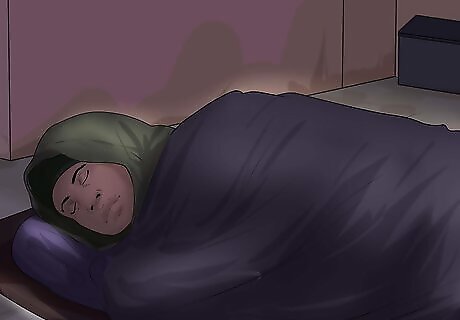
Go to bed when you’re warm. If it’s cold outside and you are cold going to bed, you’re not going to be able to warm yourself up. Do what it takes to get warm before you get under your blankets or into the sleeping bag. Run around, windmill your arms, do jumping jacks -- any of these could get your body warm enough.

Keep moving. On particularly cold nights, you might have to stay awake and in motion to stay warm. A body in motion creates heat and will help you keep warm. If this means moving around during the night and resting during the day that may be a trade-off you will have to make. However, you must be cautious not to overheat and start sweating. When you sweat, you leave moisture trapped in your clothing and on your skin which can cool you down.
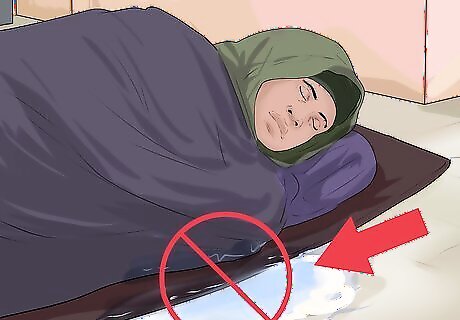
Don’t let your sleeping materials get damp. Wet blankets and sleeping bags in the cold are not going to dry. If you have a sleeping bag, try not to even breathe into it -- it can get it damp quite easily. Package your sleeping materials in plastic bags during the day so that they won’t get wet. Also avoid setting up camp close to water -- it will blow around and get your sleeping materials wet.
Finding Shelter
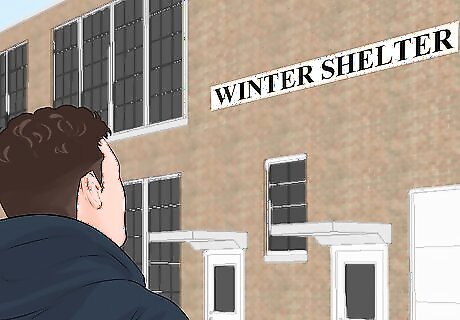
Look for a designated winter shelter. In regions where the weather gets extremely cold in the winter, most local governments set up shelters for winter in churches and other community buildings. These are only open on the coldest nights. Look for postings around town that will tell you which buildings are designated.

Check homeless shelters for room. Homeless shelters typically fill up quickly in the winter months, so if you want to sleep in one for the night, you will probably need to line up early. Many churches and other community organizations operate shelters to help people in need.
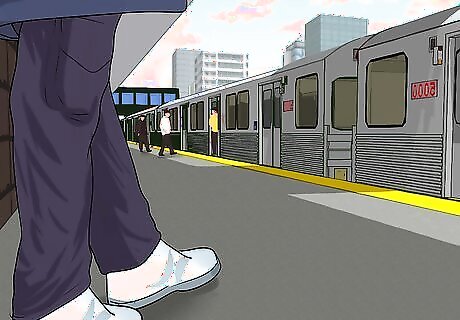
Find alternate shelters. If you are not able to or do not want to go to a shelter, find a good place to sleep. This can include overhangs that will protect you from rain or alleyways that are out of the wind. In extreme circumstances, you may have to find an area that is warm even if it is not permissible for you to be there; this can include hallways in apartment complexes, subways, public buildings or even unoccupied housing units. When you sleep at night, be sure it is somewhere warm. Hypothermia can set in while you are sleeping if you lack adequate warmth.




















Comments
0 comment